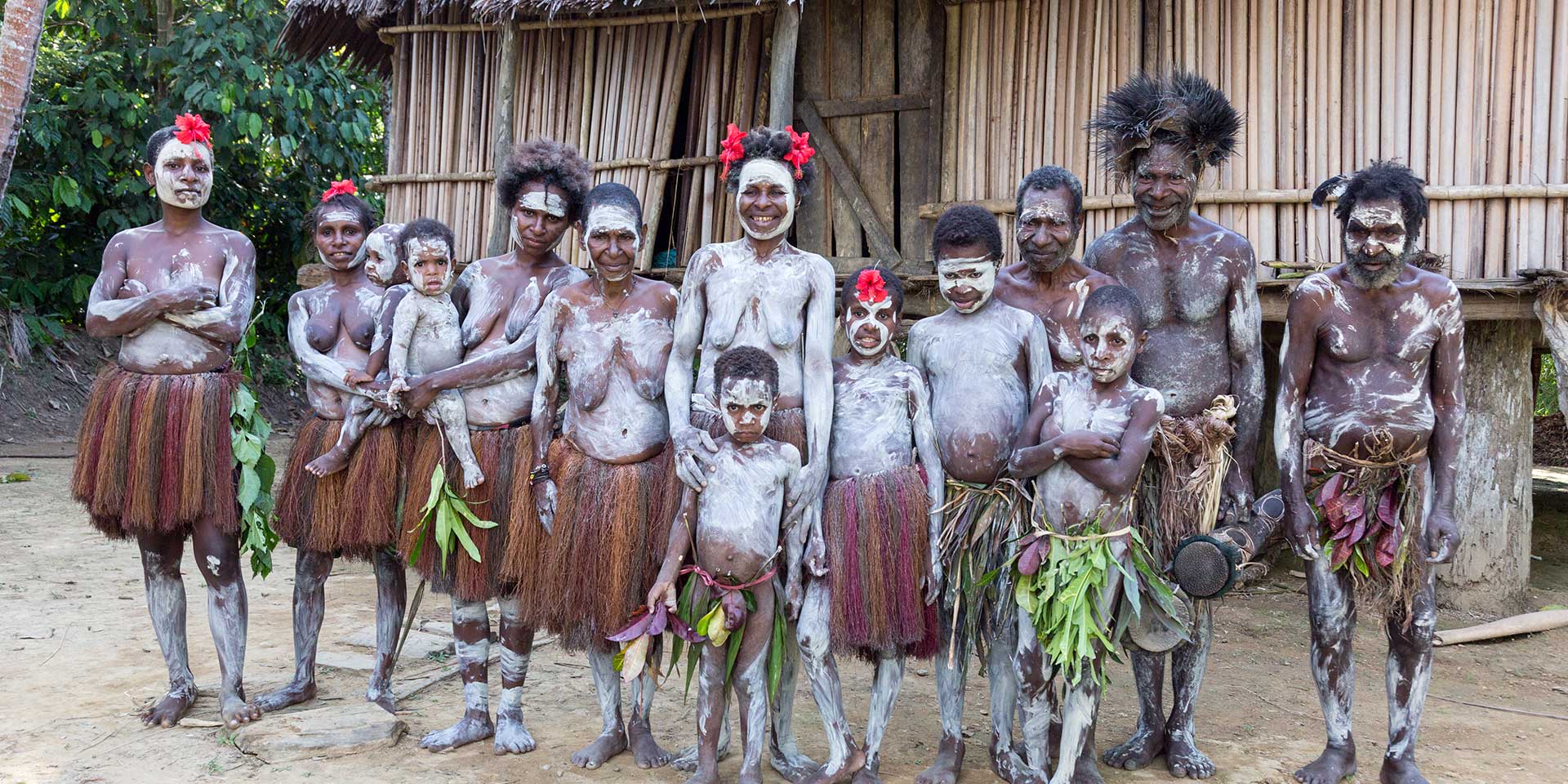
From the hot and humid lowlands we headed once again to the cooler climes of the highlands, this time to Tari, home of the Huli Wigmen in Papua New Guinea.
The scenery on our charter flight from the Karawari to Tari in the southern highlands was beautiful, with rugged mountains and dense forest sliding beneath us most of the way. We landed in Tari and it was dramatically different to anything I had experienced so far. Here was a small but “proper” airport with a real landing strip. There was quite a crowd outside the gates of the airport and as we alighted, we were quickly assigned a young policeman who was proudly holding an IMI Galil assault rifle; it struck me that perhaps Tari was rather more edgy than other areas in Papua New Guinea. Indeed, we soon learned that nearly every man of the Huli tribe carries a machete around with him everywhere, which further intensified the feeling.
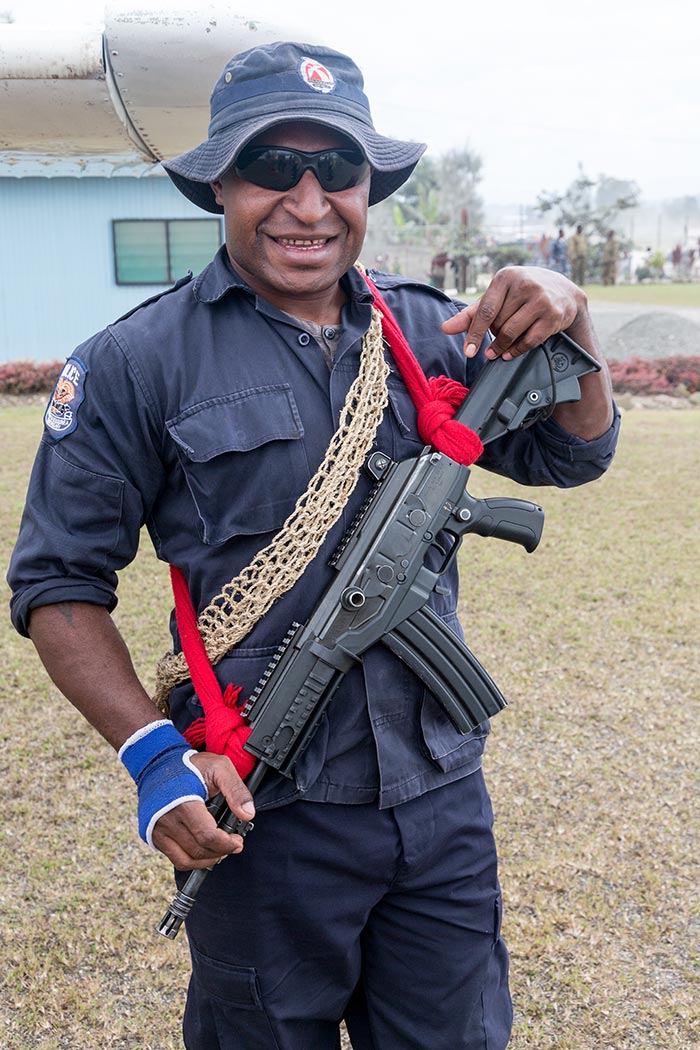

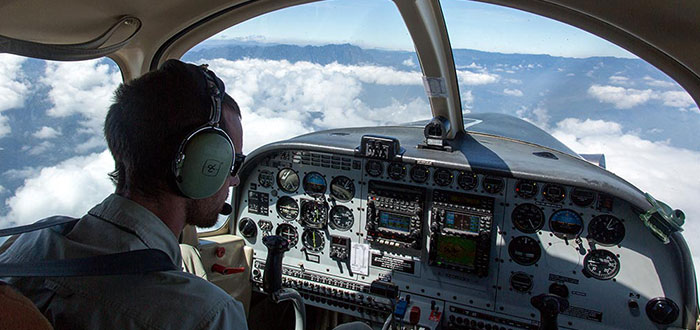

We boarded our van and headed off to the Ambua Lodge, our home for the next two nights; set on the hillside nearly 7,000 feet above sea level, it boasts stunning views over the valley below. Ambua Lodge was probably my favorite hotel of my stay in Papua New Guinea, with its traditional-style huts and beautiful grounds, which, as I would later discover, are excellent for hiking and birding.
Tari is best known for the Huli Wigmen tribe who live in this area, and I was keen see them for myself. Our first stop was at one of only three wig schools in the province, this one named Poroiba.The following day I was to visit another in Tigibi, at which I was similarly intrigued and amazed.
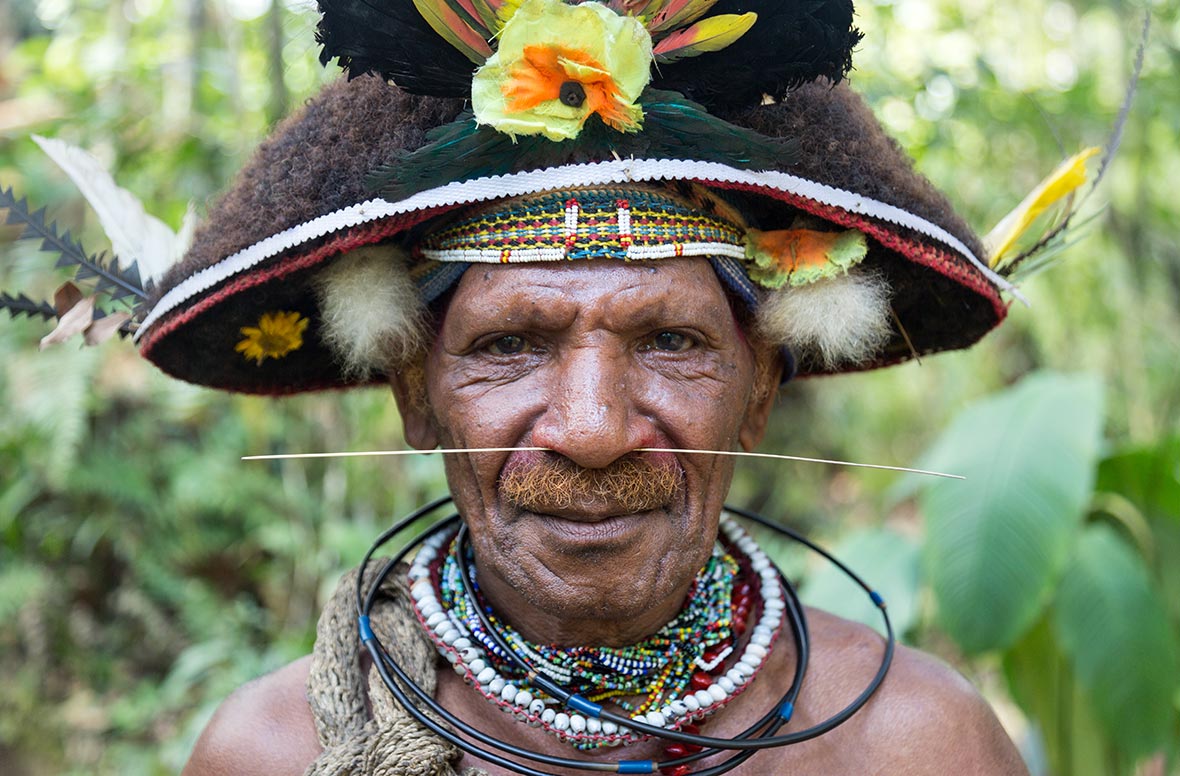
The schools are run by the Wig Master, a Huli elder who has cultivated special powers including the ability to speed the growth of hair. Their charges are all boys; girls cannot study at wig school since they don’t wear wigs and, in Huli culture, men and women live separately. Boys live with their mothers until they are seven or eight years old, when they move into the men’s living quarters and learn how to hunt with bow and arrows. At around fourteen, they may enrol in wig school. At Poroiba there was a small group of six students, apparently all virgins as only virgin males may study in wig school (although they looked pretty old to still be virgins to me), honing their craft under the master until they have completed their wig.

We watched as they went about their odd but fascinating rituals. Down by the river, the students drank water from bamboo tubes that were blessed by the master, and then spit it high into the air so that they are cleansed by the water inside and out. Next, they took ferns, soaked them in the river and sprinkled the water on their heads. They water their hair like this at least three times per day, and further, to cultivate healthy hair growth, they learn to sleep propped up on their elbow, resting their neck on a wooden crutch, which looked incredibly uncomfortable. Wig making and its attendant rituals are taken very seriously by the Huli. The students must abstain from sex and all encounters with women and follow a strict diet during their time in the wig school, or their hair will be considered no good. They spend at least 18 months growing their hair which is then cut off and made into a wig. Meanwhile, they learn the art of wig making, sewing and weaving shorn locks and inserting the feathers of exotic birds. The payment for schooling is in pigs and the longer a student wants to stay, the more pigs he must pay.
After our discoveries at wig school, we had a taste of the unique local village lifestyle in store for us. On day one we drove to Tombete village and the second day we traveled from Tigibi school to Horonapa Village.

Though we already knew that Huli men and women live in separate homes, it was only clear how strictly this segregation is enforced when we actually explored the villages. Neither is ever allowed in the other’s home, the women are not allowed even to pass in front of the men’s house, and each cook for themselves separately. Even more oddly, it was explained to us that the Huli take to the forest to have sex. I could only imagine what one might encounter walking through the forest in Huli territory.
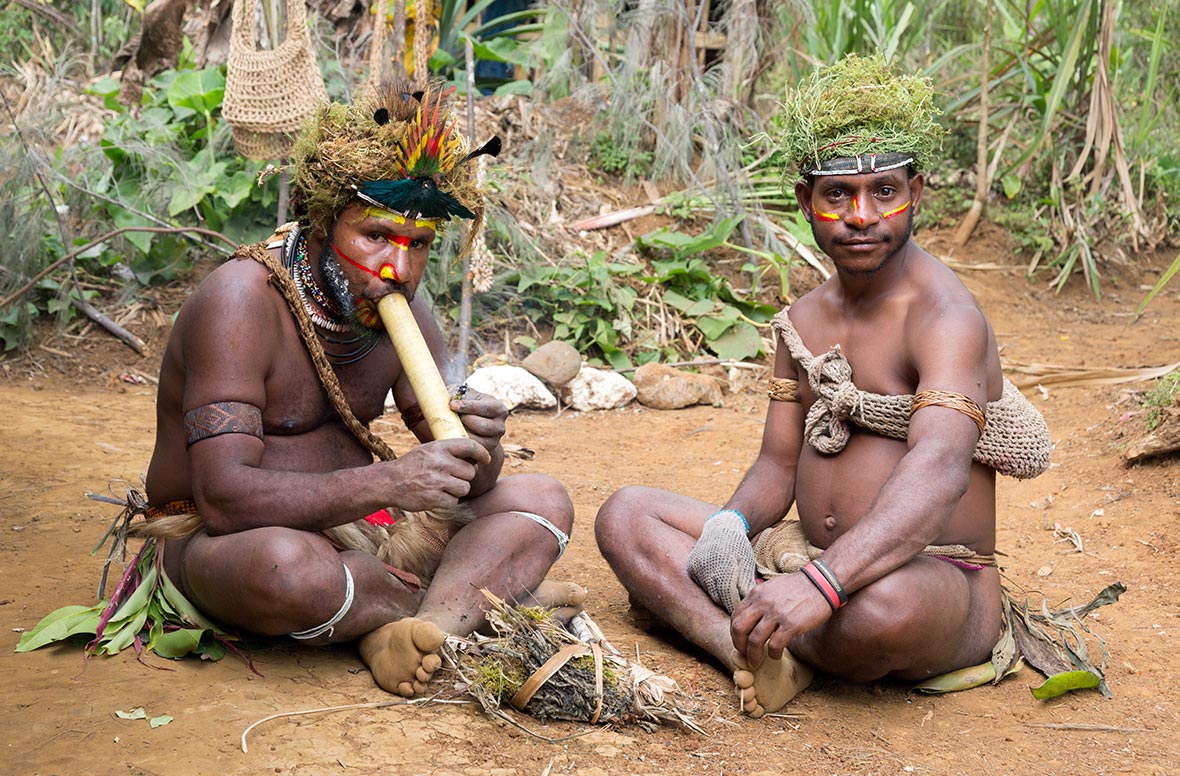
One of the men showed us how they light a fire, using a rope and his feet, which was quite impressive, and we were invited inside the men’s house, but it was so smokey I had a mini coughing fit; it baffled me how they could sleep there. We enjoyed a hunting demonstration with bow and arrow, and joked around as our security guy aimed at the target with his assault rifle.
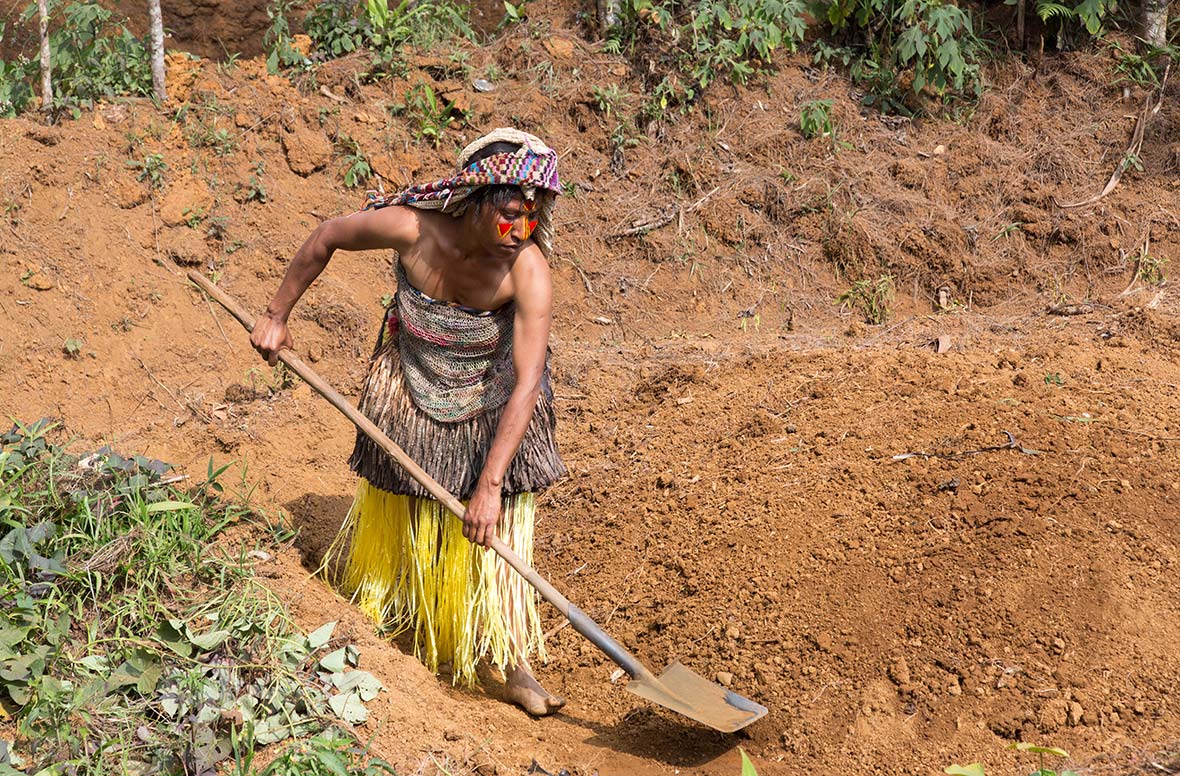
Walking through the village on our way out, we saw a woman planting sweet potatoes – one of the staple crops in the region. She had a little help from her pigs who were busily digging up the ground and clearing the soil as they snuffled for any errant roots. Once again we were reminded of the importance of these creatures to PNG culture. After a fascinating day, we headed back to Ambua lodge for a chilly evening. Here I noticed the security detail was quite visible in the hotel, which gave me pause to wonder why.
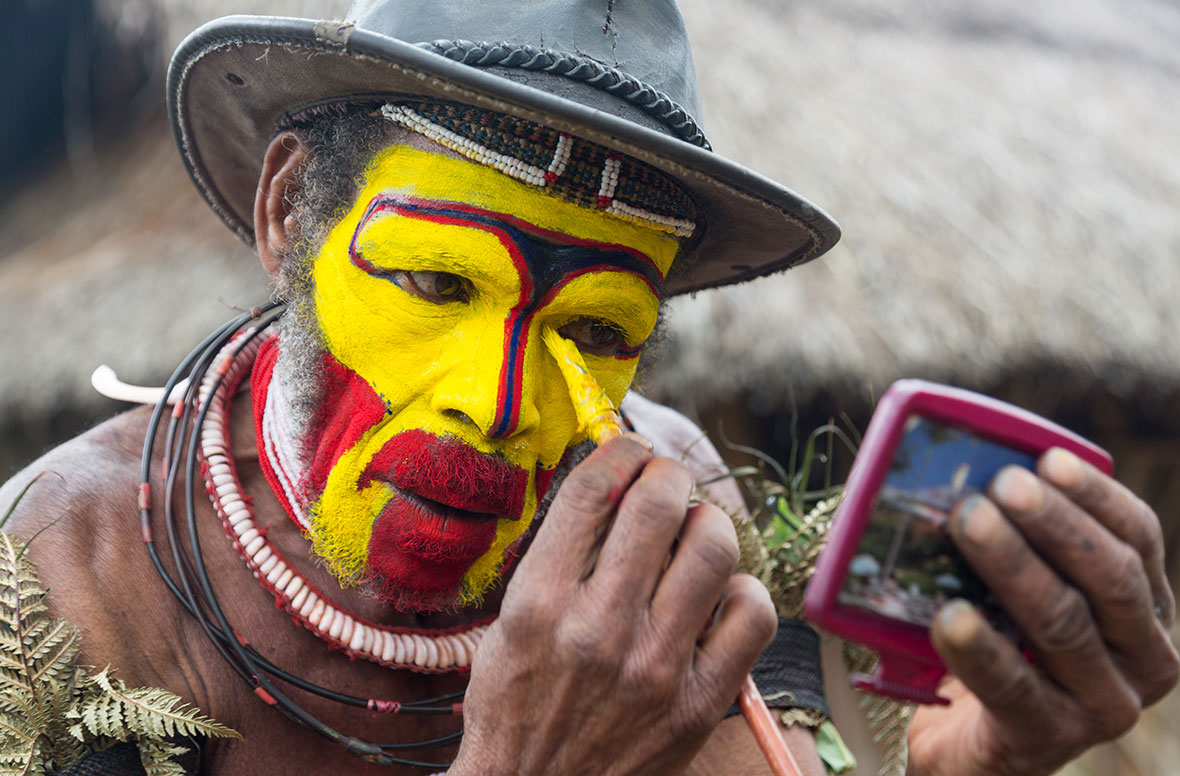
The second day was equally packed with discoveries. After breakfast, we boarded our van, bound for Tigibi village where we were welcomed with a traditional local dance, known as a “Sing Sing”. A group of men prepared for the performance, holding small mirrors as they put the finishing touches to their bright red and yellow face paint or fastening small bits of grass to their arms and waists. They wore their ceremonial wigs, adorned with the most dramatic feathers, and with hornbill necklaces around their necks they formed a line, drums in hand; it was quite a sight to behold.
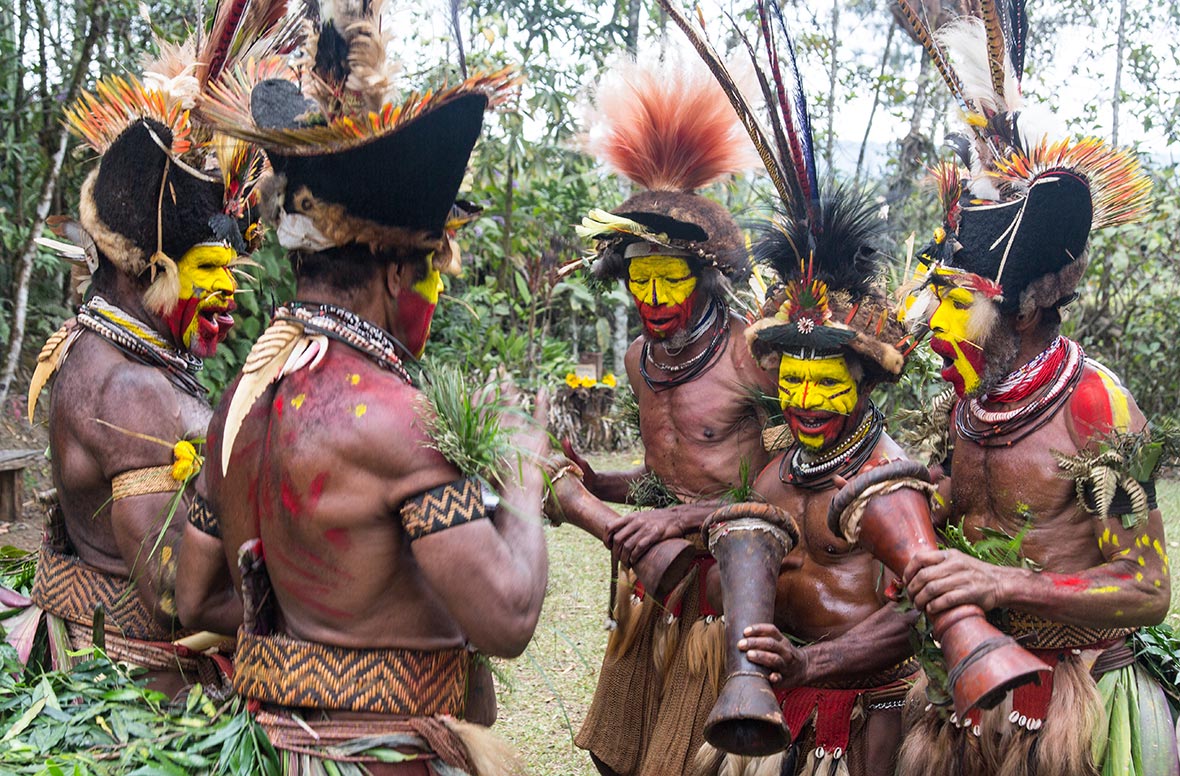
At once they began banging their drums, singing and jumping in unison, the bushes attached to the backs of their skirts bouncing up and down as they danced. The performance lasted for 20 minutes or so, after which they were happy to pose for photos and chat. While this performance was for our benefit, they also do it for themselves and it’s among the customs that the Huli people believe in very strongly.
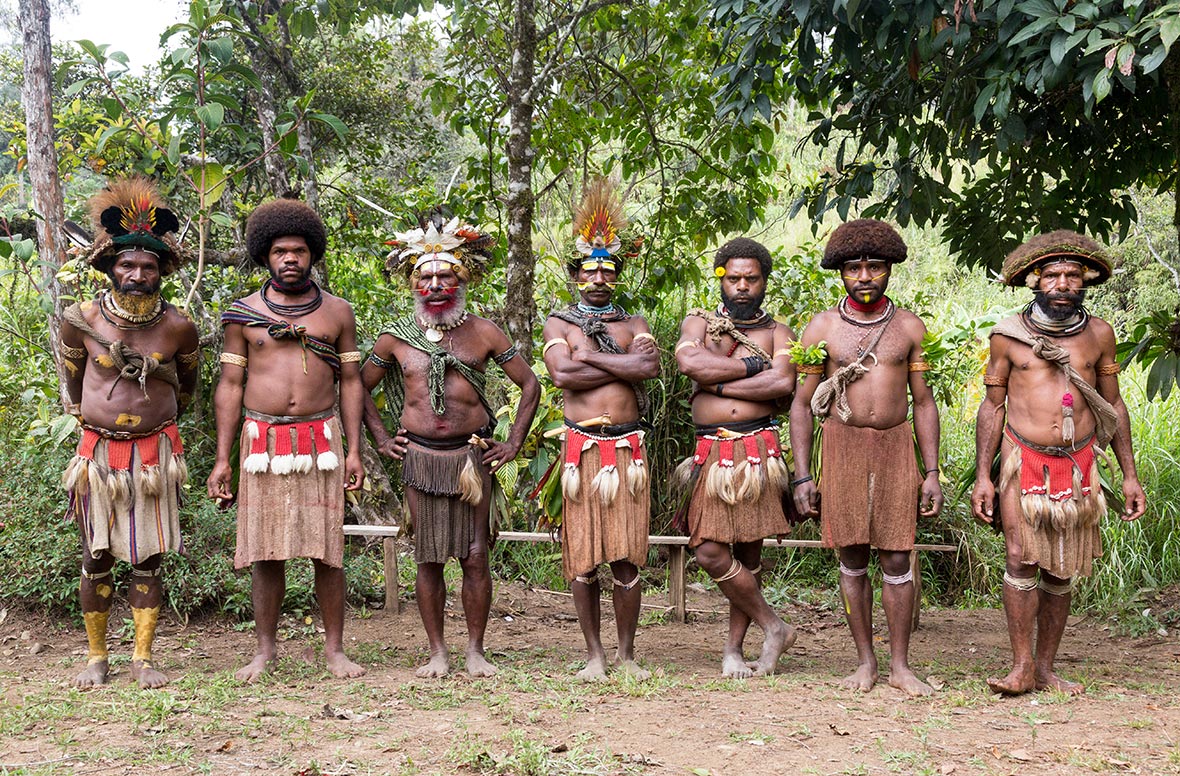
After round two of wig school and a little more village exploration, we enjoyed a relaxing picnic lunch before heading to Piango village to witness a Tarali Sun Dance. Similar to the Sing Sing, this performance featured several men with bright paint on their faces. One man had painted himself black and covered his body with dead leaves.
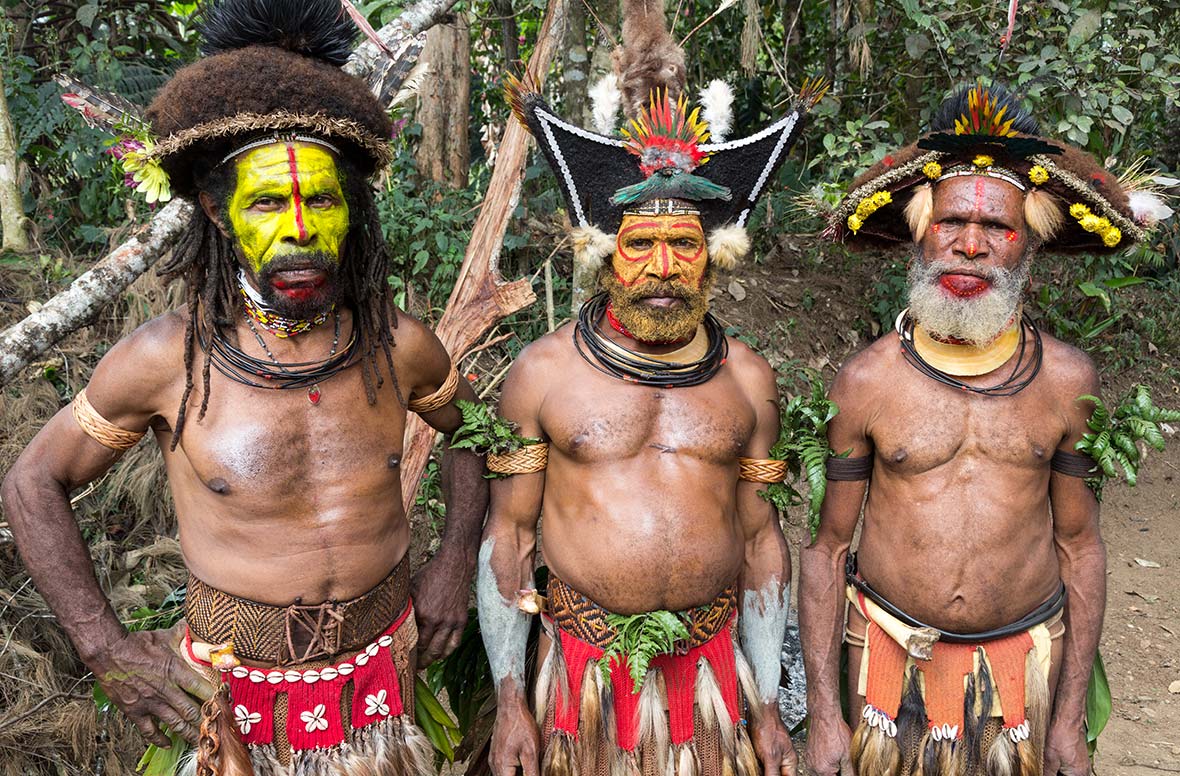
As the dance started, five men jumping and shuffling, the man in black acted as a sort of human musical instrument, creating a sound like a cymbal with his leaves. Meanwhile, one woman followed them around as they danced in a circular pattern.

Our last stop of the day was the main market in Tari. At first glance, it wasn’t a pretty sight, with garbage strewn everywhere, the hawkers setting up their makeshift shops at random, laying piles of fruit and vegetables on the ground, under umbrellas. Though dirty and crowded, like everywhere in PNG the people were very friendly, many begging to have their photos taken, or chatting and playing darts. Our security guard commented that they were well behaved because they could see his gun and though that was a sobering moment and I was glad to have the firepower on our side, I never felt the slightest bit unsafe.
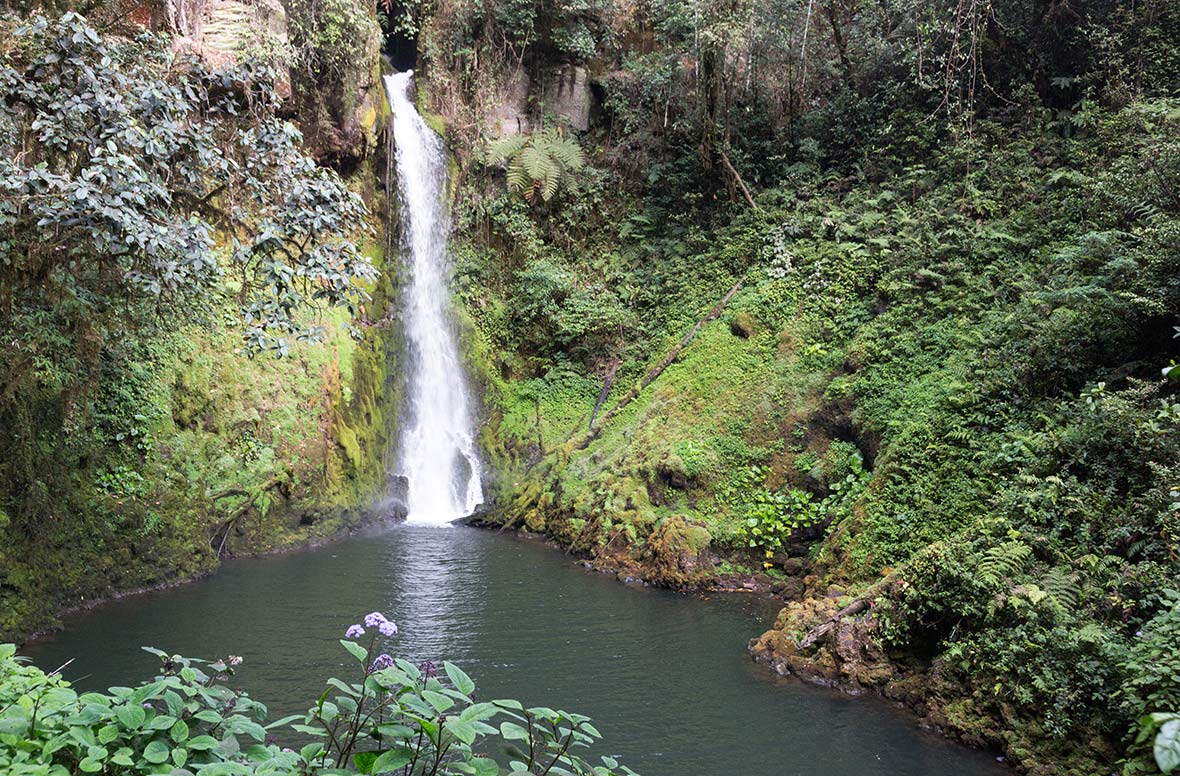
We arrived back at Ambua Lodge with a couple hours of daylight to spare, so we headed out again for a short hike to try to catch a glimpse of a Bird of Paradise. We could certainly hear them, and I did see a couple flying, but unfortunately they were way too far off to photograph. Our hike took us down to a pretty waterfall, and finally back to the lodge for my last night in Papua New Guinea.



